Bubble Nebula (NGC 7635) & Messier 52
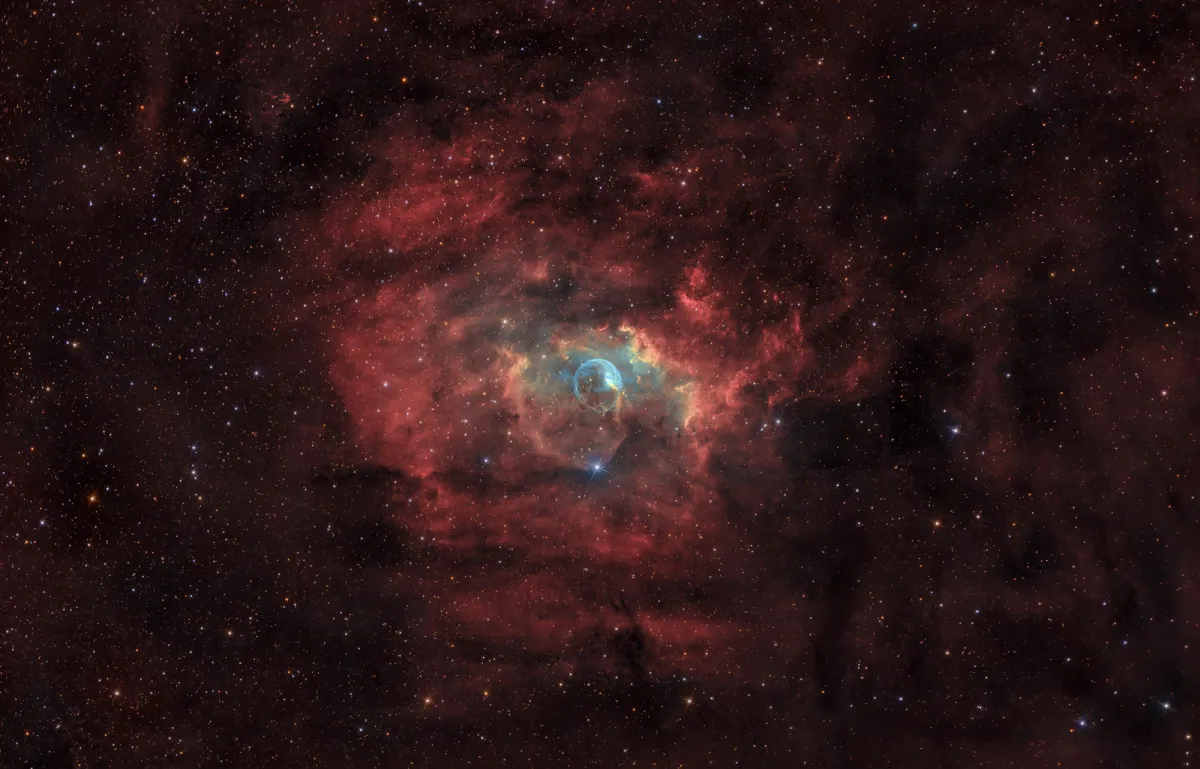
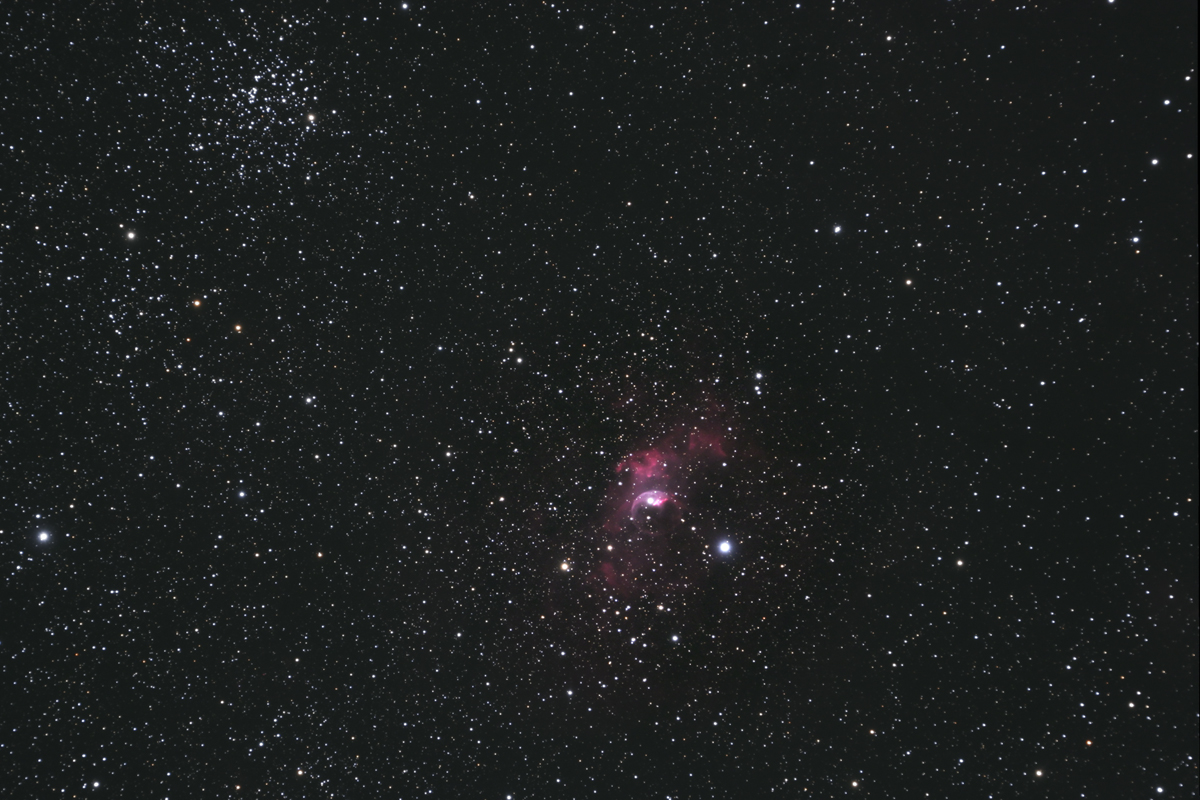
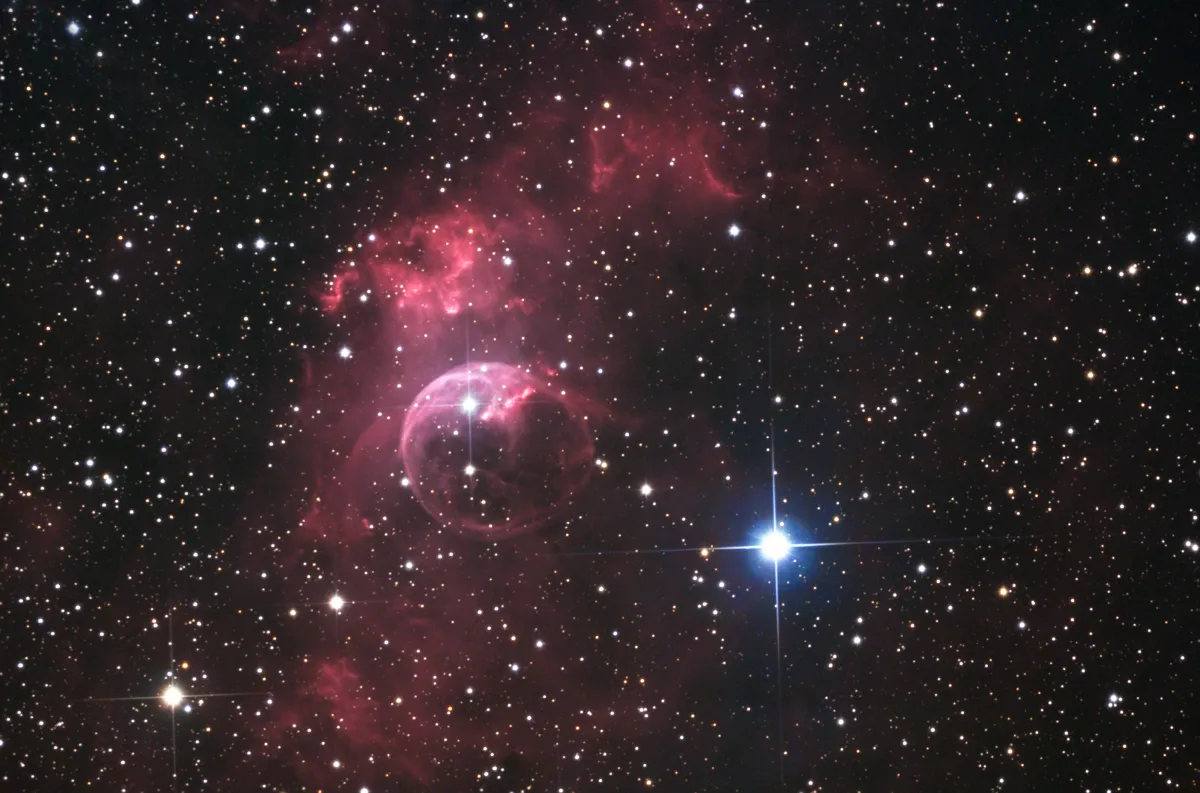
Bubble Nebula (NGC 7635)
NGC 7635 was discovered by William Herschel on 3 November 1787. He cataloged it as IV 52. He described it as «a star 9 magnitude with very faint nebulosity of small extentent about it». [464] The distance is given as 2.41 kpc (7860 light years). [145]
It is a galactic H-II region. Within, believed to be near the edge of the nebula, stands a Wolf-Rayet star (SAO 20575), whose intense stellar wind has created a spherical bubble, giving this nebula its name. Other sources speak of an O star instead of a Wolf-Rayet star. O stars have less strong stellar winds than WR stars. NGC 7635 is sometimes classified as an uncommon planetary nebula, but has no PK number. [4]
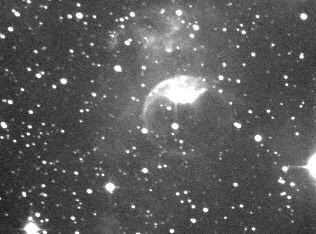
| Designation | NGC 7635 |
| Type | EN |
| Right Ascension (J2000.0) | 23h 20m 45.0s |
| Declination (J2000.0) | +61° 12' 42" |
| Diameter | 15 × 8 arcmin |
| Photographic (blue) magnitude | 11.0 mag |
| Metric Distance | 3.400 kpc |
| Dreyer Description | vF, * 8 inv l excentric |
| Identification, Remarks | WH IV 52; h 2235; GC 4947; LBN 549; in Sh2-162, Bubble nebula |
Open Cluster Messier 52
This is a beautiful star cluster of the open or galactic type, located in a Milky Way region on the western edge of the constellation near Cepheus. Charles Messier stumbled upon this star cluster while observing this year's comet on 7 September 1774. He described M 52 as a cluster of very small stars shrouded in a faint nebula. But on this point Messier was wrong. There is no nebula at or near M 52. The closest, at about half a degree, is NGC 7635.
M 52 belongs to the richer and more condensed open star clusters. Its calculated density ranges from over 3 stars per cubic parsec to 50 stars per cubic parsec near the centre. The star cluster is one of the younger ones, comparable in age and type to the Pleiades. The main components are blue giants of spectral type B7. The two apparently brightest stars in this group are yellow giants of type F9 (7.77 mag) and G8 (8.22 mag). [4]
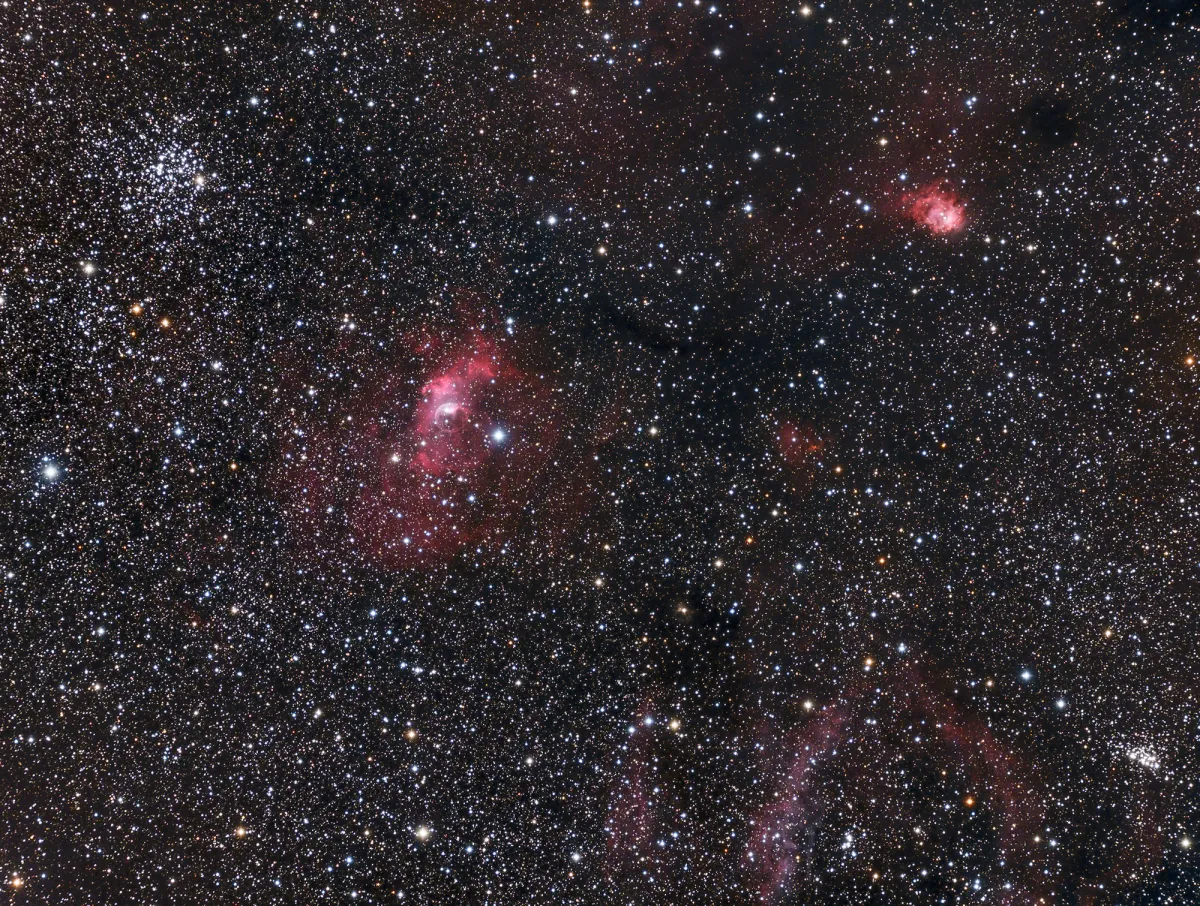
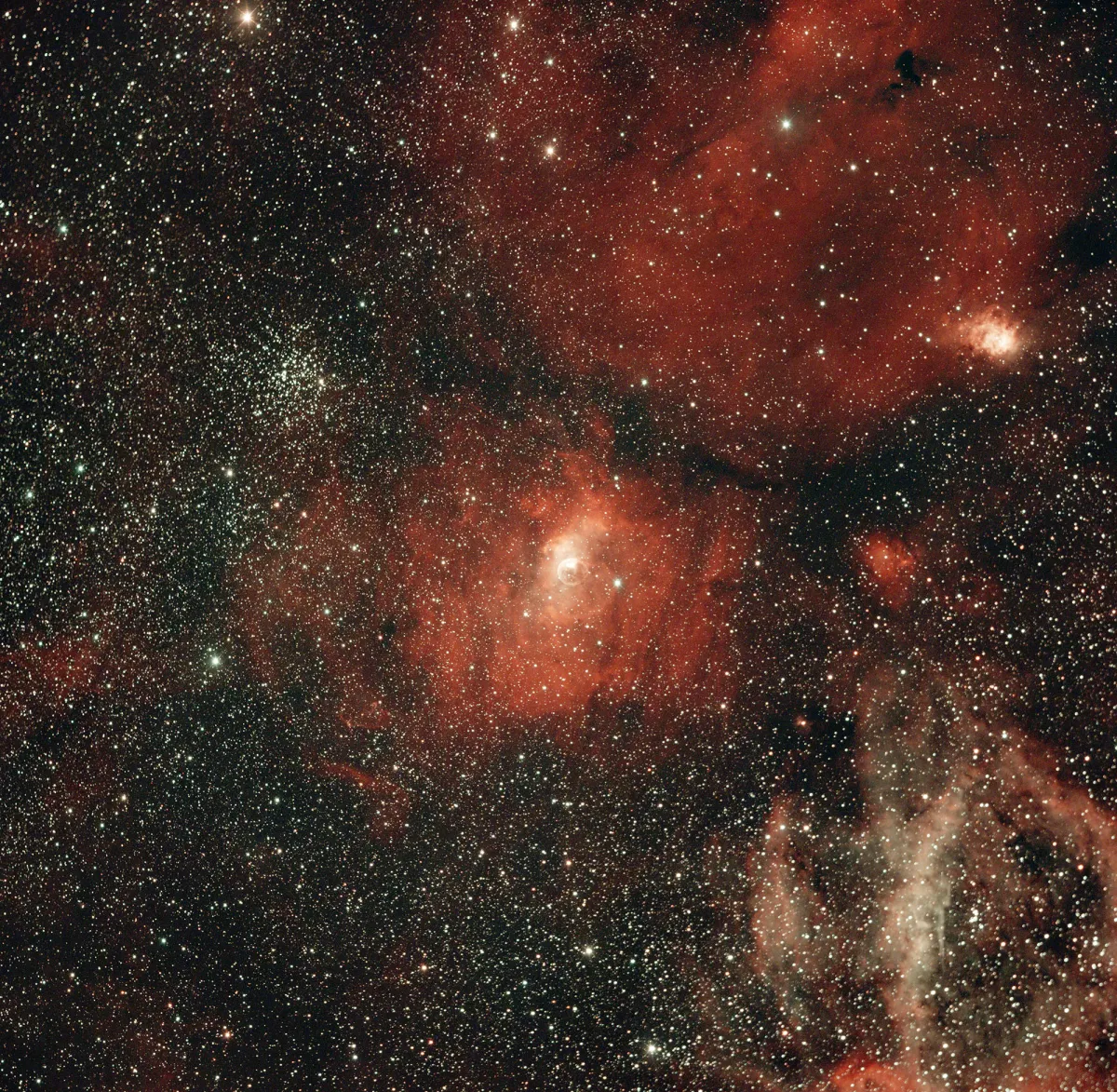
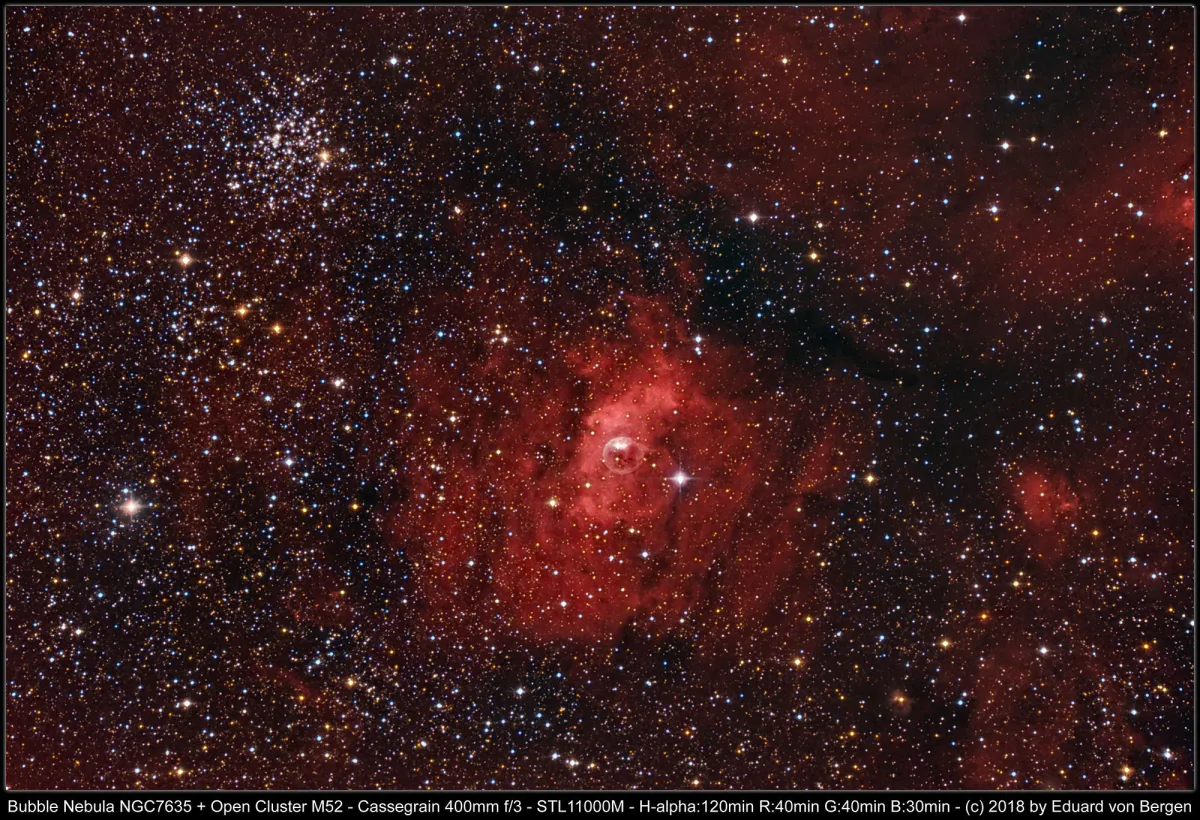
| Designation | NGC 7654 |
| Type | OCL (I2r) |
| Right Ascension (J2000.0) | 23h 24m 48.0s |
| Declination (J2000.0) | +61° 36' 00" |
| Diameter | 16 arcmin |
| Visual magnitude | 6.9 mag |
| Metric Distance | 1.421 kpc |
| Dreyer Description | Cl, L, Ri, mCM, R, st 9…13 |
| Identification, Remarks | h 2238; GC 4957; M 52; OCL 260 |
Where is Cassiopeia's Bubble?
The Bubble Nebula NGC 7635 and Messier 52 are located in the constellation Cassiopeia, which is circumpolar, but is highest in the sky at night in the months of May to February and is therefore best observed. On 13 September it is in opposition to the Sun and crosses the meridian at local midnight. If you take the distance from α to β Cassiopeiae and extend it beyond beta by a factor of 1.2, you come across the open star cluster M 52. There is another simple trick with the Telrad finder: M 52 has von Caph (β Cassiopeiae ) and from ι Cephei about the same distance. The telescope is aligned in such a way that the outermost circle of the Telrad lies on the line connecting the two stars and the centre of the three concentric circles is at the same distance from the two stars. From M 52 we continue with an eyepiece with a large true field of view. About half a degree southwest of M52 lies nebula NGC 7635.
Visual Observation
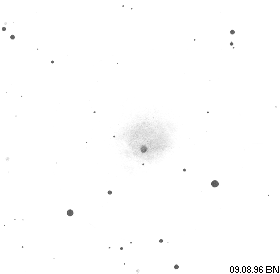
300 mm aperture: On a moderately dark night, when Cassiopeia is not particularly high in the sky, just the brightest part of the Bubble Nebula can be seen. A bubble shape is not yet visible. Without an O-III filter it is even invisible. An H-beta filter brings no improvement. On a very dark night with Cassiopeia near the zenith, NGC 7635 should certainly be visible more. The stars in the image below are from a printout. The number and position of the stars has not yet been corrected, only the 8.2 mag bright non-stellar object in the bright nebula has been added as a star. — 1996, Bernd Nies
762 mm aperture: Bubble Nebula NGC 7635 appears «on the right» as a crescent moon extending to a faint star, with the left part of the crescent being much bolder than the right, tapering one. — 30" f/3.3 Slipstream Dobsonian, Hasliberg Reuti, 3. 3. 2022, Eduard von Bergen
